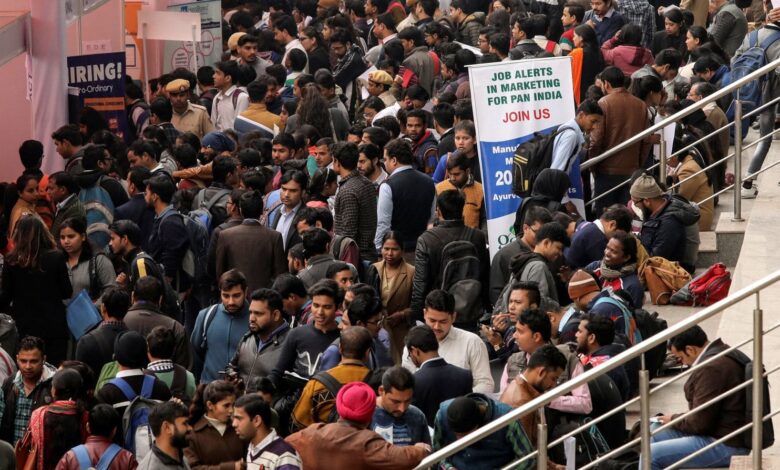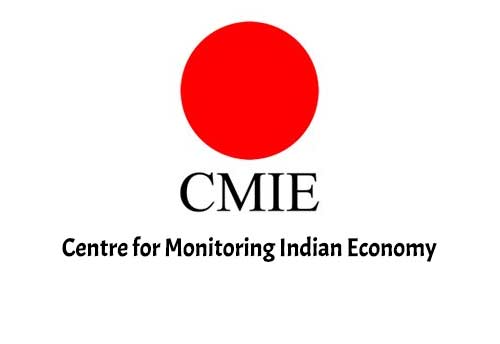India’s unemployment rate records high in 16 months: CMIE

India’s unemployment rate records high in 16 months: CMIE
Unemployment is one of the most difficult problems for both developed and developing countries to resolve. The inability to integrate people into the labor force has wider implications for the progress and future development of nations. The issue of employment and unemployment is, therefore, a key priority for global development. In developing countries like India, there is a lot of discussion about how closely poverty and unemployment are related.
Recent records say India’s unemployment rate is at an all-time high. According to information released by the Centre for Monitoring Indian Economy (CMIE), India’s jobless rate increased from 8.00% in November to 8.30% in December, the highest level in 16 months.
The unemployment rate declined to 7.44% in rural areas from 7.55% in December, while it increased to 10.09% in urban areas from 8.96% the previous month. With Haryana posting the highest rate at 37.4%, different states have seen varying amounts of unemployment. The nation’s lowest unemployment rate, 0.9%, is in Odisha.

Each month, CMIE published the data in order to compute the national unemployment rate. The country experienced its highest unemployment rate during the Covid-19 pandemic. It has been falling ever since December 2022. In the final month of 2022, India’s jobless rate increased to 8.30%, a 16-month high.
The jump in the unemployment rate was “not as horrible as it may seem,” according to Mahesh Vyas, managing director of the CMIE because it came on top of a good gain in the labor participation rate, which rose to 40.48 percent in December, the highest level in a year.
Most significantly, he told Reuters, “The employment rate has increased in December to 37.1%, which is again the highest since January 2022.”
According to CMIE data, the jobless rate increased to 37.4% in Haryana in December, 28.5% in Rajasthan, and 20.8% in Delhi.

The highest unemployment rate last month was 37.4% in Haryana, while the lowest was 0.9% in Odisha. Seven additional states, including Delhi, have double-digit unemployment rates in addition to Haryana.
Separate quarterly data compiled by the government-run National Statistical Office (NSO) and made public in November show that the unemployment rate dropped from 7.6 to 7.2% in the July-September quarter.
One of the complaints made by opposition parties against the NDA government at the Center is the rising unemployment rate. Rahul Gandhi, the leader of the Congress, has spoken out against the divisive politics of the BJP government as well as rising prices and unemployment during his Bharat Jodo Yatra.
Rahul stated at a press conference that India needs to shift from a sole concentration on GDP development to growth with employment, skilling of young, and establishing industrial facilities with export prospects.
Prior to the national elections in 2024, the primary challenges for Prime Minister Narendra Modi’s government will still be controlling rising inflation and creating jobs for millions of young people joining the labor force.
In order to mobilize public opinion on issues such as rising prices, unemployment, and what it claims are the divisive politics of Modi’s BJP, Congress launched a five-month-long cross-country march from Kanyakumari to Srinagar in September.

Why unemployment rate is rising when the country is growing?
Because of India’s inadequate educational and vocational systems, local degrees and certifications are frequently regarded as worthless by employers.
Instead of continuing their education, joining family members in farming, or staying at home and surviving off of family rental income, pensions received by elderly household members, or government transfers, many disillusioned job searchers instead choose to give up and continue their studies. Many women wind up working at home for unpaid jobs like cooking, cleaning and caring for children and elderly relatives.
There are a number of overlapping and connected factors that contribute to unemployment in India, but just a few major ones can be identified. Even though it is not exhaustive, this list identifies many of the primary causes of India’s high unemployment rate. There may also be other factors that affect this problem, many of which may not yet be identified.
- India has seen a huge increase in population over the previous 50 years. India’s population is anticipated to surpass China’s by 2024, and it is projected to maintain that position for the rest of the twenty-first century. A bigger percentage of the population is unemployed as a result of the country’s economy’s inability to keep up with the rapidly increasing population.
- Because the Indian economy is still at a relatively early stage of development, it is growing considerably more slowly than it should. In other words, as the population increases, the economy is unable to keep up with the demand for jobs, and an increasing number of people are having trouble finding work. The outcome is a lack of employment opportunities nationwide.
- industrialization has expanded tremendously but at a somewhat modest rate, much like the economy. The Indian economy has benefited from a strong focus on the industry at the national level, but overall, industrial growth continues to create relatively fewer new job possibilities than the population increase.
- India’s educational system continues to be seriously defective, notwithstanding recent increases in literacy rates. The program is mostly theory-oriented and lacks the requisite vocational training to be in line with the current economic climate. The degree-oriented system displaces itself when it comes to producing human resources capable of slipping into certain jobs within the economy.
- The cottage industry, which includes apparel and handicrafts, is one of the principal sources of revenue for peasant farmers in rural India. However, they are negatively impacted by larger, more automated industries that surpass these small-scale ones in terms of productivity. Due to the difficulty in maintaining cottage industries, many people in rural areas are losing their jobs.
Edited by Prakriti Arora




